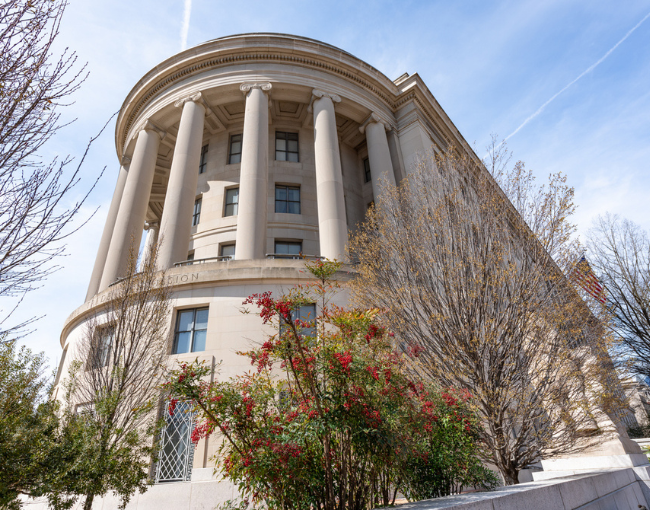Home > Insights > Publications > Mergers at Risk: FTC and DOJ Issue New Guidelines to Enhance Powers to Challenge Mergers Across Industries

On December 18, 2023, the Federal Trade Commission (“FTC”) and the Antitrust Division of the Department of Justice (“DOJ”) issued a final version of their Merger Guidelines. Initially proposed in July 2023, after five months of public commentary and feedback and two years of work in total, the 2023 Merger Guidelines include 11 enforcement principles to support the Biden administration’s more aggressive antitrust enforcement policies.
The new guidelines succeed the 2010 Obama-era Horizontal Merger Guidelines and 2020 Trump-era Vertical Merger Guidelines (rescinded). In the initial proposal, the guidelines were to create presumptions of illegality, including strong language such as “mergers should not …” In the final version, some of this language was relaxed to emphasize that any presumptions are rebuttable or to say that certain thresholds are more of an inference. Otherwise, the proposed guidelines were in large part enacted.
Guidelines 1-6 are substantive in nature and raise prima facie concerns, whereas Guidelines 7-11 explain how to apply Guidelines 1-6 to specific scenarios. In general, the 11 guidelines seek to address “excessive market consolidation across industries” and to strengthen the agencies’ approaches to merger enforcement. The first six guidelines are as follows:
- Guideline 1: Mergers Raise a Presumption of Illegality When They Significantly Increase Concentration in a Highly Concentrated Market.
- Guideline 2: Mergers Can Violate the Law When They Eliminate Substantial Competition Between Firms.
- Guideline 3: Mergers Can Violate the Law When They Increase the Risk of Coordination.
- Guideline 4: Mergers Can Violate the Law When They Eliminate a Potential Entrant in a Concentrated Market.
- Guideline 5: Mergers Can Violate the Law When They Create a Firm That May Limit Access to Products or Services That Its Rivals Use to Compete.
- Guideline 6: Mergers Can Violate the Law When They Entrench or Extend a Dominant Position.
The former 2010 Merger Guidelines have been ramped up considerably to expand the circumstances in which there is a presumption of illegality. Whereas there was no market share threshold in the 2010 Guidelines, the new Guideline 1 creates a presumption of an unlawful merger where a horizontal merger would result in a share greater than 30 percent if the Herfindahl-Hirschman Index (“HHI”) change is greater than 100, or if the post-merger HHI is greater than 1,800 and results in a change of more than 100 HHI points. The former threshold for a “highly concentrated market” was 2,500.
Guideline 2 (curtailing mergers where competition is substantially eliminated) would facially apply even where an industry is not highly concentrated. Guideline 3 (challenging mergers if they “increase the risk of coordination”) indicates that when an industry is more prone to collusion, the agencies will investigate if “facts suggest a greater risk of coordination.”
Guideline 4 allows the agencies to examine whether a merger would eliminate possible new entrants to a concentrated market. There, if a merging company does not even exist in the particular market, this guideline warns that a violation can occur if the merger group had a probability of competing in the future in that market.
Guideline 5 (cautioning that mergers may be illegal where they limit rivals’ access to products or services) also covers access to “competitively sensitive information” and deterring rivals from investing in the market. The agencies will infer that the “merging firm has or is approaching monopoly power in the related product if it has a share greater than 50% of the related product market.”
Guideline 6 (directed at forestalling mergers that might entrench or extend a dominate position) looks at whether the merged firm might leverage its opportunities by “tying, bundling, conditioning” or “raise barriers to entry” or “eliminate a nascent competitive threat.”
Guidelines 7-11 address specific scenarios where Guidelines 1-6 might be at issue. Of note, these potential scenarios include industries trending toward consolidation, mergers involved in a series of acquisitions, mergers involved in a multi-side platform, mergers involving competitions between buyers, and acquisitions involving partial ownership or minority interests.
Section 3 of the Guidelines sets out a framework and standards for rebuttal and defense evidence that the merging parties can use as advocacy supporting the merger, namely the “failing firms” defense, that the merger “would induce entry or repositioning,” and “procompetitive efficiencies.”
While the guidelines are 50 pages long, the overarching themes are too broad to determine any certain conclusions. As such, the full scope of these changes will have to be monitored through the agencies’ enforcement actions and related court proceedings. Although the agencies’ press release makes sure to note that the guidelines are not technically binding on a court, the 11 guidelines are effective immediately and will drastically increase the amount of at-risk mergers.
Related practitioners and companies will need to track enforcement actions closely to see how these new guidelines are being used and interpreted.
